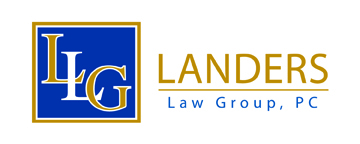Introduction
In today's fast-paced digital world, protecting your business's creative ideas and inventions is more important than ever. Intellectual property and rights are at the heart of this protection. As technology advances, especially, with artificial intelligence (AI) changing how we do business, understanding these rights is crucial for keeping your company's edge.
This article will guide you through the ins and outs of intellectual property and rights. We'll explore what they are, who owns them, and how to protect them. Whether you're a small business owner or part of a large corporation, this information will help you safeguard your innovative ideas and creations.
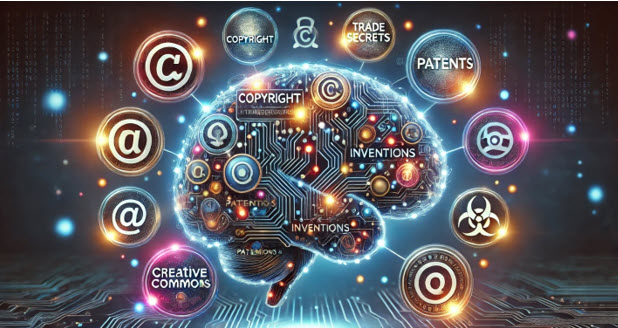
What Is Intellectual Property?
Intellectual property, often called IP for short, refers to the valuable creations of the human mind. These creations can be ideas, inventions, or creative expressions that have monetary value and people are willing to pay for it because it solves a problem, provides a solution, or provides other valuable benefits to them. Intellectual property and rights go hand in hand, as the law protects these intangible assets.
Types of Intellectual Property
Trade Secrets
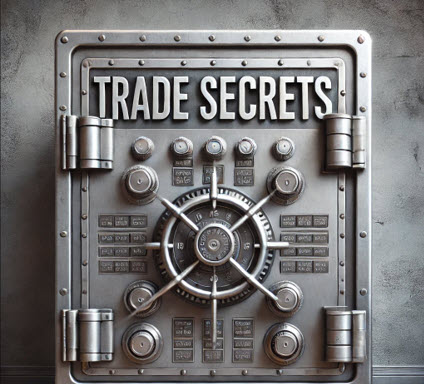
Trade secrets are like the secret recipe for your grandma's famous cookies – valuable information that gives your business an advantage because others don't know about it. This could be a manufacturing process, a customer list, or a marketing strategy.
Customer lists are one of the most valuable trade secrets because they’re an asset to the company that has compiled the list and consists of customers, clients, or patients the list owner has developed a knowing, liking, and trusting relationship.
This list will usually continually purchase goods and services from the company and be loyal over a prolonged time.
The list owner knows what motivates those on the list to make buying decisions and when they make those purchases. This secret is known only to the company and is very valuable. Therefore, it is referred to as a “trade secret” and becomes a protectable intellectual property.To keep trade secrets protected:
- Limit who knows the information
- Use non-disclosure agreements - an agreement that anyone given information about your trade lists must sign agreeing to keep your list secret and not use it for any personal gain of their own or share it with anyone else.
- Implement security measures to prevent unauthorized access.
For more on trade secret protection, check out the World Intellectual Property Organization's guide.
Also, one tool for trade secret management and protection is BlackCloak. This AI-powered platform helps protect sensitive information and trade secrets by monitoring the dark web and identifying potential intellectual property leaks.
Patent Strategies
Patents are like a deal with the government. You share your invention with the public, and, in return, you get exclusive rights to use it for a certain period. Developing a smart patent strategy is key to protecting your innovations and intellectual property rights.
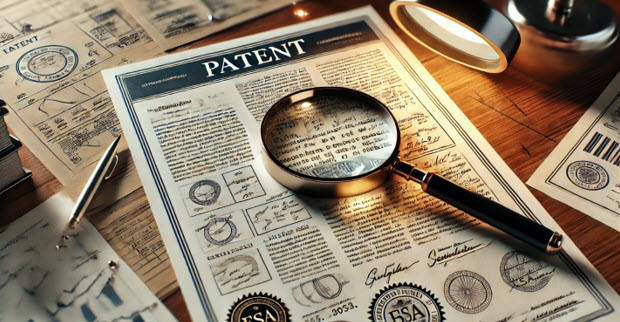
When crafting your patent strategy:
- Decide what to patent (not every invention needs a patent)
- Choose when to file (timing can be crucial)
- Pick which countries to file in (depending on your market)
The United States Patent and Trademark Office offers valuable resources for patent seekers. PatSnap, an AI tool for patent search, is a platform that offers advanced patent search and analysis capabilities to help businesses identify potential infringements and other possible invention opportunities.
Licensing Considerations
Licensing is like renting out your intellectual property. You allow others to use your IP, usually in exchange for payment. When considering licensing:
- Decide if you want to offer exclusive or non-exclusive licenses.
- Determine the geographic areas where the license applies.
- Set the duration of the license.
A helpful AI tool to assist with licensing management is anaqua.com. This AI-enhanced software helps manage IP portfolios, including licensing agreements and royalty tracking.
Unauthorized and illegal use of intellectual property is a common pain point for business owners and entrepreneurs. It can also be very costly in the form of loss of profits and if there is a need to litigate to protect your intellectual property, attorney fees can be extremely expensive. Therefore, it is best to always have a strong licensing agreement in place with anyone who you agree to allow to utilize your product. This can help deter the wrongful use against your interests.
Several years ago, I represented a small business that had a fantastic product that revolutionized the user experience of having to use a finger to press down on a button to release the contents of any spray can. The invention allowed the user to simply attach an apparatus on top of the can and then use the handle like a gun with a trigger. Pull the trigger and pressure was applied to the button which released the contents of the spray.
My client licensed this product to numerous other companies under different brand names. One company with whom the client company had a license agreement started to manufacture a replica of the product and sell it under its own brand. Fortunately, a licensing agreement was in place and when the client company learned of this license agreement violation, I filed a lawsuit and was able to obtain an injunction to stop the company from violating the agreement and the offending company was required to pay my client substantial fees in damages and had to pay all of my attorney’s fees.
If there had not been a license in place the circumstances would have been much different and detrimental to my client. This is a prime example of why a business must be diligent in protecting its intellectual property and the rights that come with it.
Who Owns Intellectual Property?

Understanding who owns intellectual property and rights is crucial. Generally, the person who creates something owns it. But it's not always that simple:
- Employees: Usually, if you create something as part of your job, your employer owns it.
- Freelancers: If you hire someone to create something for you, make sure your contract clearly states who will own the IP.
- Collaborations: When people work together, ownership can get tricky. It's best to agree on ownership before starting a project.
What is Protected by Intellectual Property Law?
Intellectual property law casts a wide net, protecting various forms of creative and innovative work:
- Inventions: Protected by patents
- Creative works (like books, music, and art): Protected by copyright.
- Brand names and logos: Protected by trademarks.
- Industrial designs: Protected by design rights.
Small businesses are especially vulnerable when it comes to infringement upon their valuable intellectual properties because they usually have limited resources to fight to control and stop infringement when it occurs, especially, if the offender is a large company with deep pockets to fight a drawn-out battle.
The best defense for protecting intellectual property is to use the existing laws to protect assets and maintain a competitive edge. Below is a checklist to follow to help ensure standard operating procedures are in place to maximize intellectual property protection:
- Identify and protect your IP:
- Conduct an IP audit to identify valuable assets.
- Register trademarks, copyrights, and patents as appropriate.
- Use non-disclosure agreements (NDAs) to protect trade secrets.
- Monitor and enforce your rights:
- Regularly search for potential infringements.
- Take action against infringers through cease-and-desist letters or legal proceedings.
- Educate employees:
- Train staff on the importance of IP and how to protect it.
- Implement policies for handling confidential information.
- Consider licensing:
- Generate revenue by licensing your IP to others.
Here are two fictional examples of how a business can leverage IP laws to protect them and keep the competitive edge needed within the industry or application in which the IP property is being used.
Here are two fictional examples of how a business can leverage IP laws to protect and keep the competitive edge needed within the industry or application in which the IP property is being used.
Example 1: A small local bakery, "Sweet Delights," develops a unique recipe for gluten-free, low-calorie cupcakes. To protect their IP:
- They keep the recipe as a trade secret, having employees sign NDAs.
- They trademark their bakery name and logo.
- They copyright their distinctive packaging design.
- They patent a special baking process that gives their cupcakes a unique texture.
This multi-faceted approach helps prevent competitors from copying their product or brand identity.
Example 2: A software startup, "EcoTrack," creates an innovative app for tracking personal carbon footprints. To protect their IP:
- They patent their unique algorithm for calculating carbon emissions.
- They copyright the app's source code and user interface design.
- They trademark the app name and logo.
- They keep future development plans as trade secrets.
For a deeper dive into what's protected, the World Intellectual Property Organization provides comprehensive information.
Using AI to Protect Intellectual Property
Artificial intelligence isn't just changing how we do business; it's also revolutionizing how we protect intellectual property and rights. Here's how:
- Automated patent searches: AI can quickly sift through millions of patents, helping you ensure your idea is new.
- Trademark infringement detection: AI tools can scan the internet to find potential trademark violations.
- Copyright violation monitoring: AI can identify unauthorized use of copyrighted material across the web.
- Predictive analytics for IP portfolio management: AI can help predict which patents in your portfolio might be most valuable in the future.
An AI Tool for IP Protection
There are tools available that offer comprehensive IP protection, including trademark watching, and copyright infringement detection. Aclaimip.com is one such tool that should be reviewed for this purpose.
Intellectual Property Risks
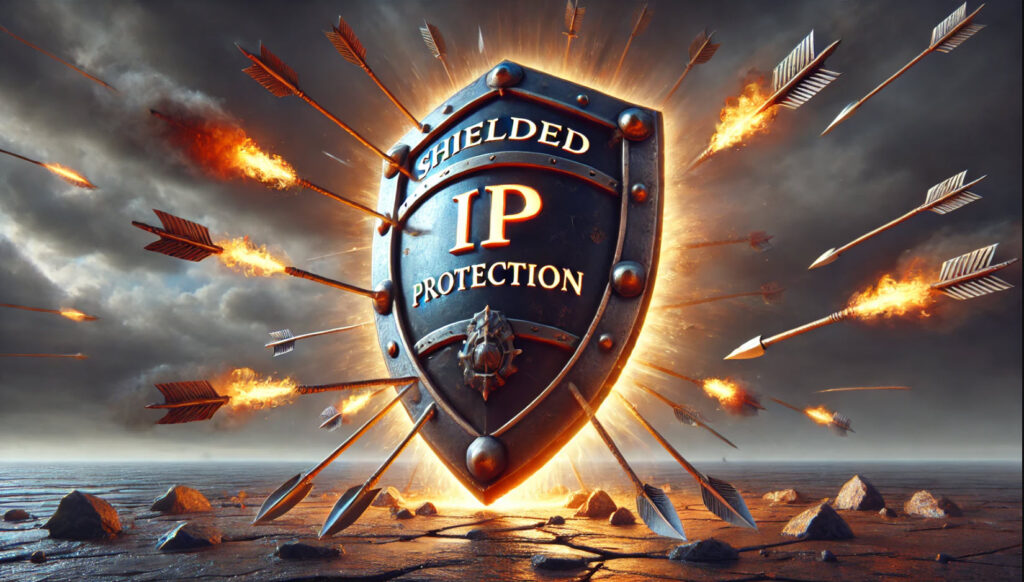
Protecting your intellectual property comes with challenges. Being aware of these risks is the first step in guarding against them:
- Infringement by competitors: Someone using your patented invention without permission.
- Theft of trade secrets: An employee or hacker stealing your confidential information.
- Counterfeiting: Fake products being sold under your brand name.
- Cybersecurity threats: Digital attacks aimed at stealing your IP.
To learn more about cybersecurity and IP protection, visit the National Institute of Standards and Technology's Cybersecurity Framework.
AI Tool for Risk Assessment
A resource that can be used to identify and mitigate digital risks to intellectual property is Cybelangel.
Fake Intellectual Properties
Counterfeit goods and pirated content are big problems in the world of intellectual property and rights. They can harm your brand and cut into your profits. Here's how to fight back:
- Use anti-counterfeiting technologies: Things like holograms or special inks can make your products harder to fake.
- Work with customs and law enforcement: Many countries have programs to help stop fake goods at the border.
- Educate your customers: Help them spot the difference between real and fake products.
The fake products scam industry is a massive and growing problem, causing billions of dollars in losses annually. While it's challenging to pinpoint an exact figure for global losses due to fake product scams annually, statistics show that fake products are the probable cause of billions of dollars in losses each year.
The problem is pervasive and creates a dark cloud of fake products on a global scale and affects various aspects of e-commerce, from direct product fraud to associated scams like promo abuse and friendly fraud. Businesses in America take a huge hit of the losses. Unfortunately, small to medium-sized businesses that can afford the losses the least are often the most victimized because of their lack of education and limited resources when it comes to fake products.
The statistics below provide the impact of fake products. They should provide a wake-up call for businesses to be diligent about their intellectual property and rights:
- In 2023, reported losses to impersonation scams, which include fake product scams, topped $1.1 billion in the United States alone. This is more than three times the amount reported in 2020.
- On a global scale, the problem is even larger. In Latin America, it's estimated that 20% of all e-commerce revenue is lost to fraud, including fake product scams. More terrifying for merchants still, it is predicted that the cumulative losses to online payment fraud globally between now and 2027 will exceed $343 billion.
- One extensive network of fake e-commerce stores, called BogusBazaar, has processed over one million orders since 2021. It's estimated that over 850,000 shoppers have fallen victim to this network alone, with ordered items totaling over $50 million. In the United States, promo abuse, a fraud often associated with fake products, cost retailers more than $89 billion annually in 2021.
- Friendly fraud, which can involve fake product claims, is expected to cost merchants over $100 billion in chargebacks this year.
- On Amazon, one of the world's largest e-commerce platforms, most listings are from third-party sellers, and a significant number of these are selling counterfeits.
The International AntiCounterfeiting Coalition offers resources on combating fake goods.
AI Tool for Counterfeit Detection
AI tools are becoming increasingly sophisticated and can help prevent fake goods and stop the illegal use and infringement of intellectual property rights. Enrupty is an AI-based solution that authenticates goods to combat counterfeiting.
Intellectual Property Litigation
Sometimes, protecting your intellectual property means going to court. While it's not ideal, it's important to know the basics:
- Proving ownership: You'll need to show that you own the IP in question.
- Demonstrating infringement: You must prove that someone used your IP without permission.
- Seeking remedies: Courts can order infringers to stop and pay damages.
- Alternative dispute resolution: Mediation or arbitration can sometimes resolve issues without a full trial.
Conclusion
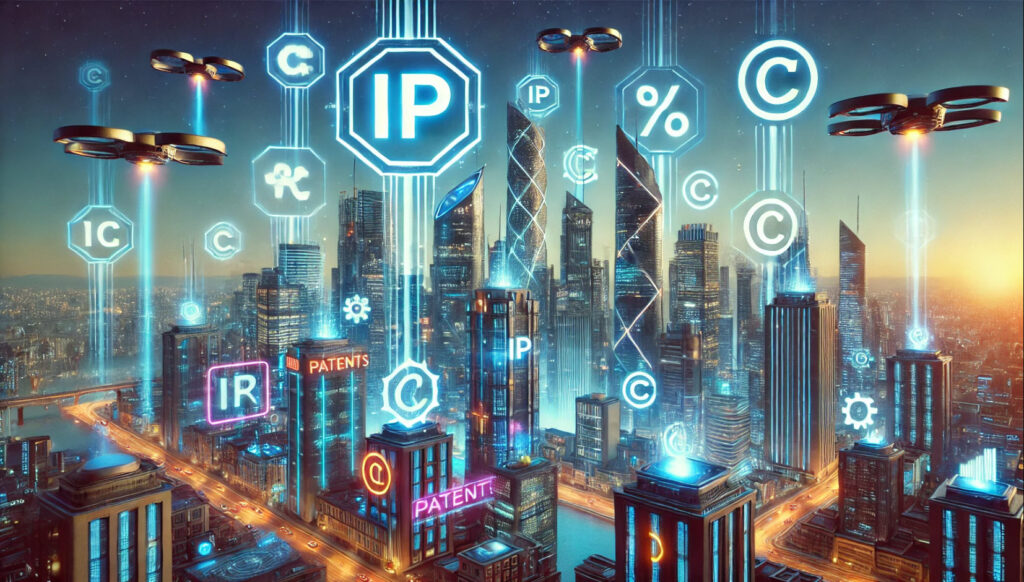
Understanding intellectual property and rights is crucial in today's business world, especially as AI continues to change the landscape. By knowing what IP is, how to protect it, and what risks to watch out for, you can better safeguard your business's valuable ideas and creations.
Remember, intellectual property protection is an ongoing process. Stay informed about changes in IP law, keep an eye on potential infringements, and don't hesitate to seek professional advice when needed. Your ideas are valuable – protect them wisely!
Want to know about AI and how it can assist you in your business to not only protect intellectual property but also boost your profits to the next level?
Get a free copy of my latest book: “AI Small Business Profits.” Learn how you can use artificial intelligence to generate more leads and close more sales using it in just 30 minutes a day without increasing your costs. Click here to get access and download your copy now.
You will also be provided with a free subscription to the newsletter, Small Business Reporter which keeps businesses updated with the latest and most effective marketing tactics and techniques to draw prospects, customers, and clients like a magnet, the most effective way to use AI to build and safeguard your business and much more.
Fill in the information below and click on the download button. Get started on skyrocketing your business to more profits now! All for free!
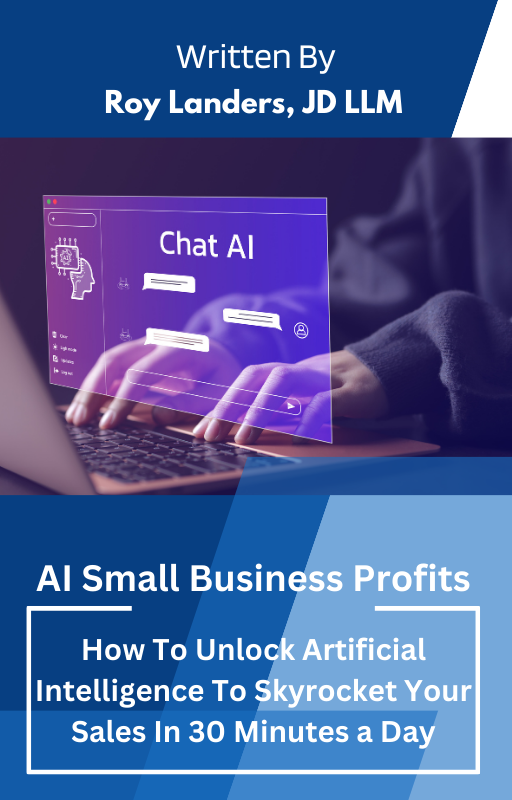
Get this book and start using the power of Artificial Intelligence (AI) to take your business to the next level. Inside you will discover:
- How AI is revolutionizing the success of businesses and entrepreneurs in ways never available before.
- How to use simple prompts to reduce activities that used to take hours into mere minutes and receive better results.
- Create email campaigns
- Create weeks of social media posts and schedule them to post automatically whenever you want.
- Much, much more…
BONUS: You will also receive a Free subscription to Small Business Reporter Newsletter, chocked full of marketing gems and secrets that draw prospects like and magnet and shows you how to turn them into rabid fans using tried and true customer relationships strategies that get them to know, like, and trust your brand and make orders and refer business to you.
Fill in the form and click “Get Book" Now!
